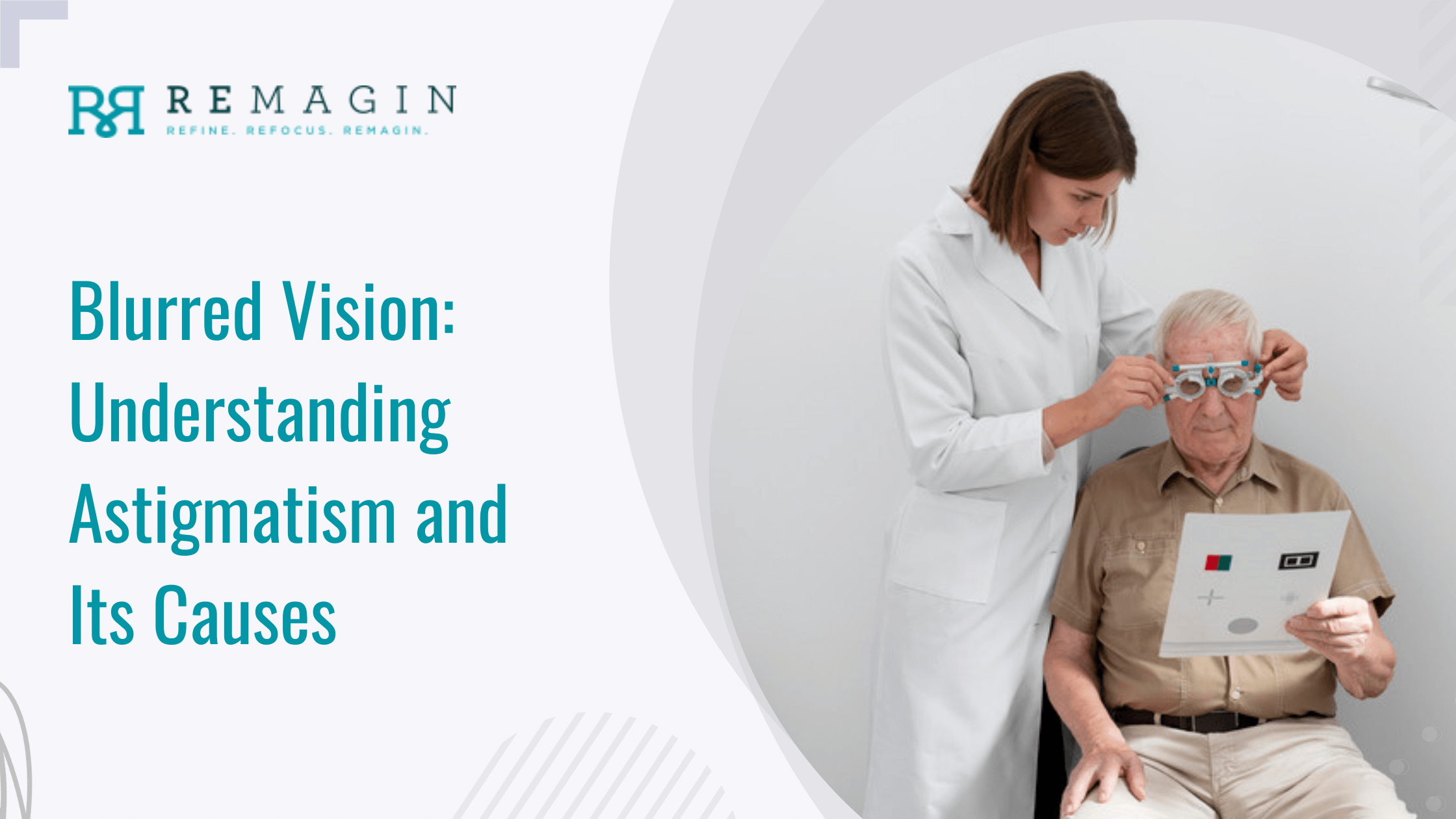Astigmatism is a common eye condition affecting millions of people worldwide. It is a refractive error that occurs when the cornea or lens of the eye is irregularly shaped, causing blurry or distorted vision. According to research, more than 150 million people in the United States suffer from the problem of refractive errors. Read on to learn more about astigmatism, its causes, symptoms, and the best astigmatism treatment near you.
What Are the Three Types of Astigmatism?
There are three types of astigmatism, each with distinct characteristics:
- Myopic astigmatism: This type of astigmatism occurs when the cornea is curved more steeply in one direction than the other, causing light to be focused in front of the retina. This makes distant objects appear blurry.
- Hyperopic astigmatism: This type of astigmatism occurs when one or both of the principal meridians are farsighted or hyperopic. This means that objects that are close may appear blurry, while objects that are far away may be clearer.
- Mixed astigmatism: This type of astigmatism occurs when the cornea is curved differently in two directions, causing light to be focused on two different points. Mixed astigmatism is a combination of myopic and hyperopic astigmatism, and it can be caused by irregularly shaped cornea, lens, or both.
What Are the Causes of Astigmatism?
Some of the triggers of astigmatism are listed below:
- Genetics: Astigmatism can be inherited, and it tends to run in families. If one or both of your parents have astigmatism, you may be more likely to develop the condition.
- Eye injuries: Trauma to the eye, such as a blow or puncture, can cause scarring or other changes to the shape of the cornea or lens, leading to astigmatism.
- Medical conditions: Certain medical conditions, such as keratoconus (a progressive thinning of the cornea) or pellucid marginal degeneration (a rare condition that affects the cornea), can cause astigmatism.
- Surgery: Some types of eye surgery, such as cataract surgery, can cause astigmatism as a side effect.
- Age: As we age, the shape of our eyes can change, leading to astigmatism in some cases. This is more common in people over the age of 50.
What Are the Symptoms of Astigmatism?
Some common symptoms of astigmatism include:
- Blurry or distorted vision, especially at certain distances or angles
- Difficulty seeing when reading or looking at a computer screen
- Eye strain or discomfort, especially after prolonged reading or computer use
- Headaches, especially after prolonged visual tasks
- Squinting to try and focus on objects
- Seeing halos or glare around lights
- Difficulty driving at night or in low-light conditions
How Is the Diagnosis of Astigmatism Done?
Diagnosis of astigmatism typically involves a comprehensive eye exam that includes several tests, including:
Visual acuity test: This basic eye test measures the clarity of your vision at various distances. You will be asked to read letters or numbers from a chart placed at a distance.
Refraction test: This is an exam where the optometrist or ophthalmologist will use a phoropter or trial frames and lenses to test your eyes' refractive error. This test measures the degree of astigmatism and determines the corrective lens prescription needed to improve your vision.
Corneal topography: This test measures the shape and curvature of the cornea. A special instrument called a corneal topographer creates a detailed cornea map, allowing the eye doctor to see any irregularities in its shape. This information is important in determining the degree and type of astigmatism present.
Once a diagnosis of astigmatism is confirmed, your eye doctor will discuss treatment options, including glasses, contact lenses, or refractive surgery.
What Are the Treatment Options for Astigmatism?
Here are some of the possible astigmatism treatments:
- Eyeglasses: This is the simplest and most common treatment for astigmatism. Eyeglasses with specially designed lenses can correct the uneven curvature of the cornea or lens, allowing light to enter the eye correctly and providing clear vision.
- Contact lenses: Contact lenses can also be used to correct astigmatism. Special toric lenses are designed to fit the irregular shape of the eye and provide clear vision.
- Refractive surgery: In some cases, refractive surgery may be an option for correcting astigmatism. Procedures such as LASIK or PRK can reshape the cornea to improve vision.
- Orthokeratology: This is a non-surgical option for treating astigmatism. It involves wearing specially designed contact lenses overnight to reshape your cornea and provide better vision during the day.
Overall, astigmatism correction varies depending on the severity of the condition, the patient's age and lifestyle, and other factors.
Experience Crystal Clear Vision with Remagin’s Refractive Errors Treatment
Say goodbye to blurry vision caused by astigmatism and choose Remagin. With advanced technology, Remagin provides a clear and comfortable vision correction option for astigmatism patients. Experience the difference with Remagin's precision fit and personalized approach to eye care. Book your appointment today and see the world the way it was meant to be seen.



